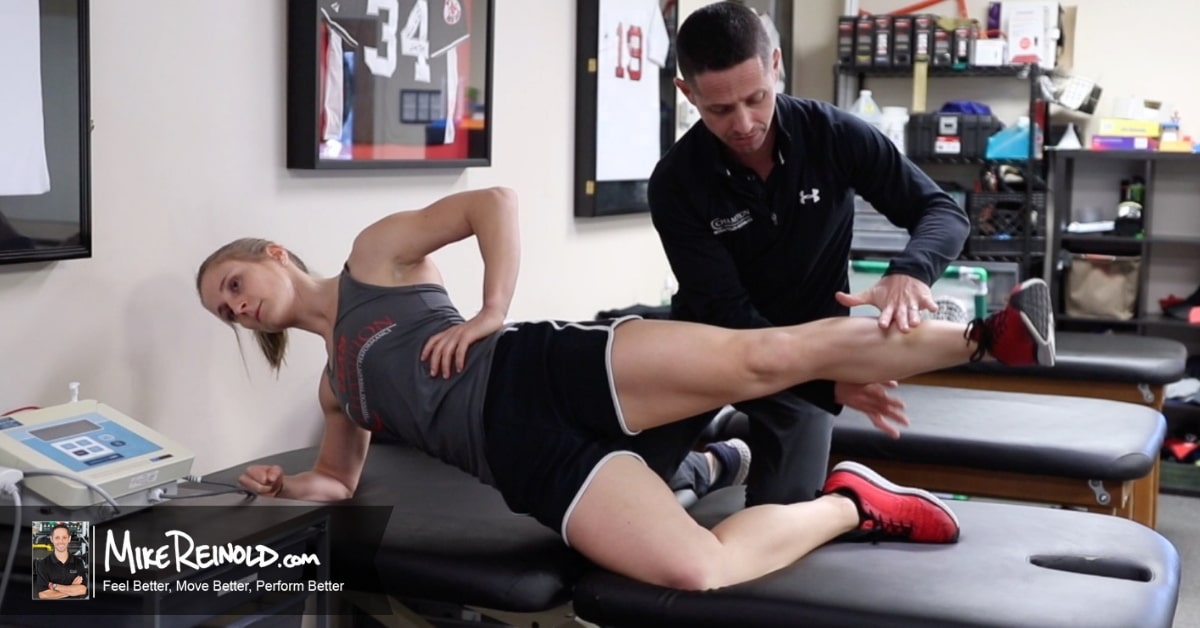 It is no secret that I am not a huge fan of the sleeper stretch, I have written about why I don’t use the sleeper stretch that often in the past. While I do realize that there is a need for it at times if you know how to perform the sleeper stretch correctly, I also think there are alternatives to the sleeper stretch that may be safer and even more effective.
It is no secret that I am not a huge fan of the sleeper stretch, I have written about why I don’t use the sleeper stretch that often in the past. While I do realize that there is a need for it at times if you know how to perform the sleeper stretch correctly, I also think there are alternatives to the sleeper stretch that may be safer and even more effective.
To begin, let me ask the question – what is it we are trying to achieve by performing the sleeper stretch? It is probably to work on shoulder internal rotation or cross body horizontal adduction mobility (we’ll refer to the later as posterior shoulder mobility). So let’s explore what else we can do to work on those areas.
Alternatives to the Sleeper Stretch
A recent study in JOSPT compared the sleeper stretch and simple cross body horizontal adduction stretching. The results were pretty interested. The authors report that the cross body horizontal adduction stretch was significantly better at restoring internal rotation of the shoulder in comparison to the sleeper stretch.
It appears that the simple cross body horizontal adduction stretch is actually a better stretch than the sleeper stretch.
Another study from JOSPT also evaluated the use of muscle energy technique (MET) during the cross body horizontal adduction stretch and found that MET was able to show an immediate increase in both horizontal adduction and internal rotation range of motion.
In both studies, the cross body horizontal adduction stretch improved posterior shoulder AND internal rotation mobility.
So, if we consider some of the disadvantageous of the sleep stretch in addition to the proven benefits of the cross body horizontal adduction stretch, I think we can see a nice alternative to the sleeper stretch.
Let’s break this down into two groups, manual and self stretching. I realize that many different people will be reading this so here are some options to help work on people but also to help perform yourself if you are the one looking for an alternative to the sleeper stretch.
Manual Stretching
I tend to perform a variety of manual techniques in addition to simple cross body horizontal adduction stretching if someone needs a little extra work or has a deficit in internal rotation, including muscle energy techniques and pin and stretch techniques. Both are really effective in my hands and show an immediate and noticeable increase in motion. Here are some photos below but I am putting together a presentation on manual therapy techniques for the shoulder that I will try to present as a webinar over the next few months.
The below photos show me performing cross body horizontal adduction stretching with muscle energy and then adding a pin and stretch technique. Simple and effective without being aggressive.

Self Stretching
To perform these stretches yourself, it is best to stand in a doorway so that the wall can help block your scapula from moving. You can place the border of your shoulder blade against the wall and perform the cross body stretch. Here is a video demonstration:

Don’t forget to catch up and read my past articles:
- Why I don’t like the sleeper stretch
- The correct technique for the sleeper stretch.
However, next time you want to improve shoulder mobility, try the cross body horizontal adduction stretch and some of these variations for a good alternative to the sleeper stretch.





